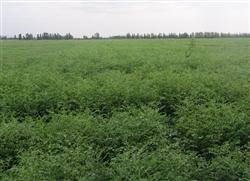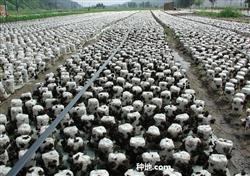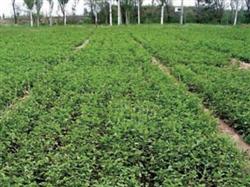Morphological characteristics and suitable planting environment of Glycyrrhiza uralensis

[morphological characteristics] Glycyrrhiza uralensis is a perennial herb with a height of 30cm and 100cm. Covered with white pubescence and glandular hairs. Aboveground stems erect, lower lignified, branchlets angular, green. Leaves alternate, odd status compound leaves. Leaflets 3-8 pairs, ovoid or ovate-elliptic, entire, apical leaflet larger. Raceme, axillary, pedicel very short, with an ovate bracteole below base, calyx campanulate, green, Corolla butterfly, purple or blue purple flowers. Fruit is pod, narrowly rectangular, curved into sickle-shaped or semicircular, brown, densely lanceolate tomentose. Seeds 5-8, ovoid and slightly flat, surface smooth, brown. Licorice is light-loving, cold-tolerant, drought-tolerant, barren-tolerant and can withstand a low temperature of-10 ℃. As licorice is a deep-rooted plant, the place with high groundwater level is not suitable for growth, which is easy to cause rotten roots and dead seedlings. Sandy loam is the best soil, but clayey soil and depressed land with poor drainage are not suitable to cultivate licorice.
- Prev

How to cultivate black fungus?
How to cultivate black fungus? Please introduce 1. Cultivation season and material preparation 1. Cultivation time: the choice of cultivation time is the key to the success or failure of cultivating Auricularia auricula, which is closely related to the high and low yield and poor quality. Bag making should be selected from early October to November, and the alpine area can be brought forward appropriately. This period of time is ideal.
- Next

Market prospect and scientific planting of licorice
Liquoric root is leguminous plant, licorice root, licorice swollen fruit or licorice glabra dry root and rhizome, is a commonly used bulk medicine. Wild licorice is mainly distributed in Inner Mongolia, Ningxia, Gansu and other places; planted licorice is mainly distributed in Hexi Corridor, Longxi periphery and some areas of Ningxia in Gansu Province. Licorices are national grade II...
Related
- Fuxing push coffee new agricultural production and marketing class: lack of small-scale processing plants
- Jujube rice field leisure farm deep ploughing Yilan for five years to create a space for organic food and play
- Nongyu Farm-A trial of organic papaya for brave women with advanced technology
- Four points for attention in the prevention and control of diseases and insect pests of edible fungi
- How to add nutrient solution to Edible Fungi
- Is there any good way to control edible fungus mites?
- Open Inoculation Technology of Edible Fungi
- Is there any clever way to use fertilizer for edible fungus in winter?
- What agents are used to kill the pathogens of edible fungi in the mushroom shed?
- Rapid drying of Edible Fungi

